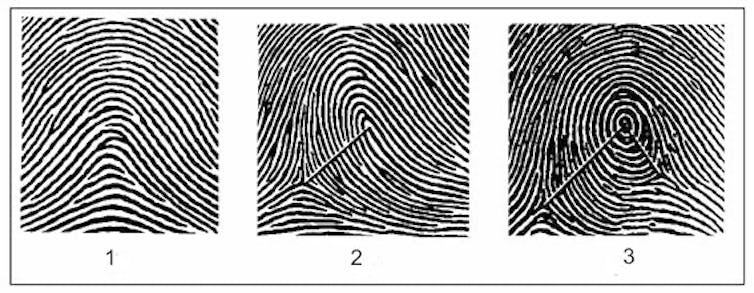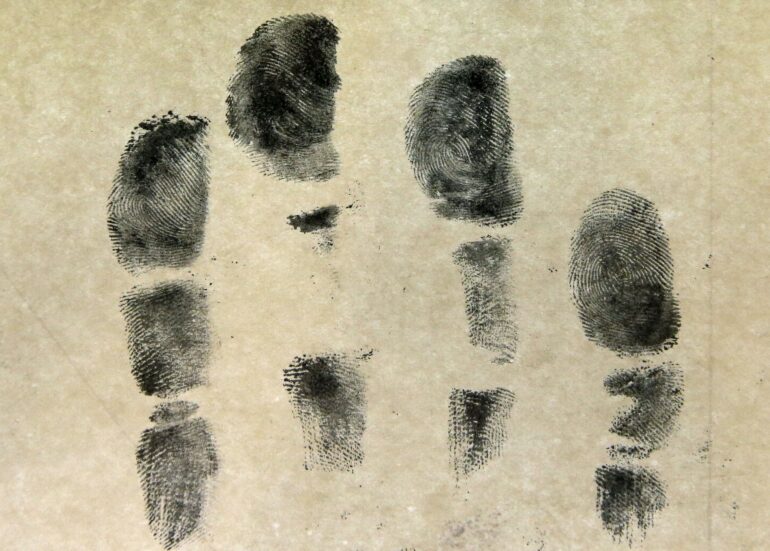When you use your fingerprint to unlock your smartphone, your phone is looking at a two-dimensional pattern to determine whether it’s the correct fingerprint before it unlocks for you. But the imprint your finger leaves on the surface of the button is actually a 3D structure called a fingermark.
Fingermarks are made up of tiny ridges of oil from your skin. Each ridge is only a few microns tall, or a few hundredths of the thickness of human hair.
Biometric identifiers record fingermarks only as 2D pictures, and although these carry a lot of information, there’s a lot missing. A 2D fingerprint neglects the depth of the fingermark, including pores and scars buried in the ridges of fingers that are difficult to see.
I’m an educator and scientist who studies holography, a field of research that focuses on how to display 3D information. My lab has created a way to map and visualize fingermarks in three dimensions from any perspective on a computer – using digital holography.
Fingermark types
Scientists categorize fingermarks as either patent, plastic or latent, depending on how visible they are when left on a surface.
Patent fingermarks are the most visible type – bloody fingerprints at crime scenes are one example. Plastic fingermarks are found on soft surfaces, such as clay, Play-Doh or chocolate bars. The human eye can see both patent and plastic fingermarks quite easily.
The least visible are latent fingermarks. These are usually found on hard surfaces such as glass, metals, woods and plastics. To make them out, a fingerprint examiner has to use physical or chemical methods such as dusting with powder, creating chemical reactions with appropriate reagents or cyanoacrylate fuming.
Cyanoacrylate makes super glue in its liquid form, but as a gas it can make latent fingermarks visible. Researchers develop the prints by letting cyanoacrylate vapor molecules react with components in the latent fingerprint residue.
The geometric details on fingermarks are categorized into three levels. Level 1 encompasses visible ridge patterns, so loops, whorls and arches. Level 2 refers to minutiae or small details, such as bifurcations, endings, eyes and hooks.

Fingerprints have visible ridge structures, such as arches (left), whorls (middle) and loops (right), but at the microscopic level they have much finer patterns and structures.
ValeriyPolunovskiy/Wikimedia Commons, CC BY-SA
Finally, Level 3 features, such as pores, scars and creases, are too small for the human eye to resolve. This is where optical techniques like holography come in handy, since optical wavelengths are in the order of microns, small enough to make out small details on an object.
Developing fingermark holograms
Since fingermarks are usually collected as 2D pictures, and holograms display 3D information, my team wanted to develop a technique that can show all the 3D topological characteristics of a fingermark.
To do this,…
